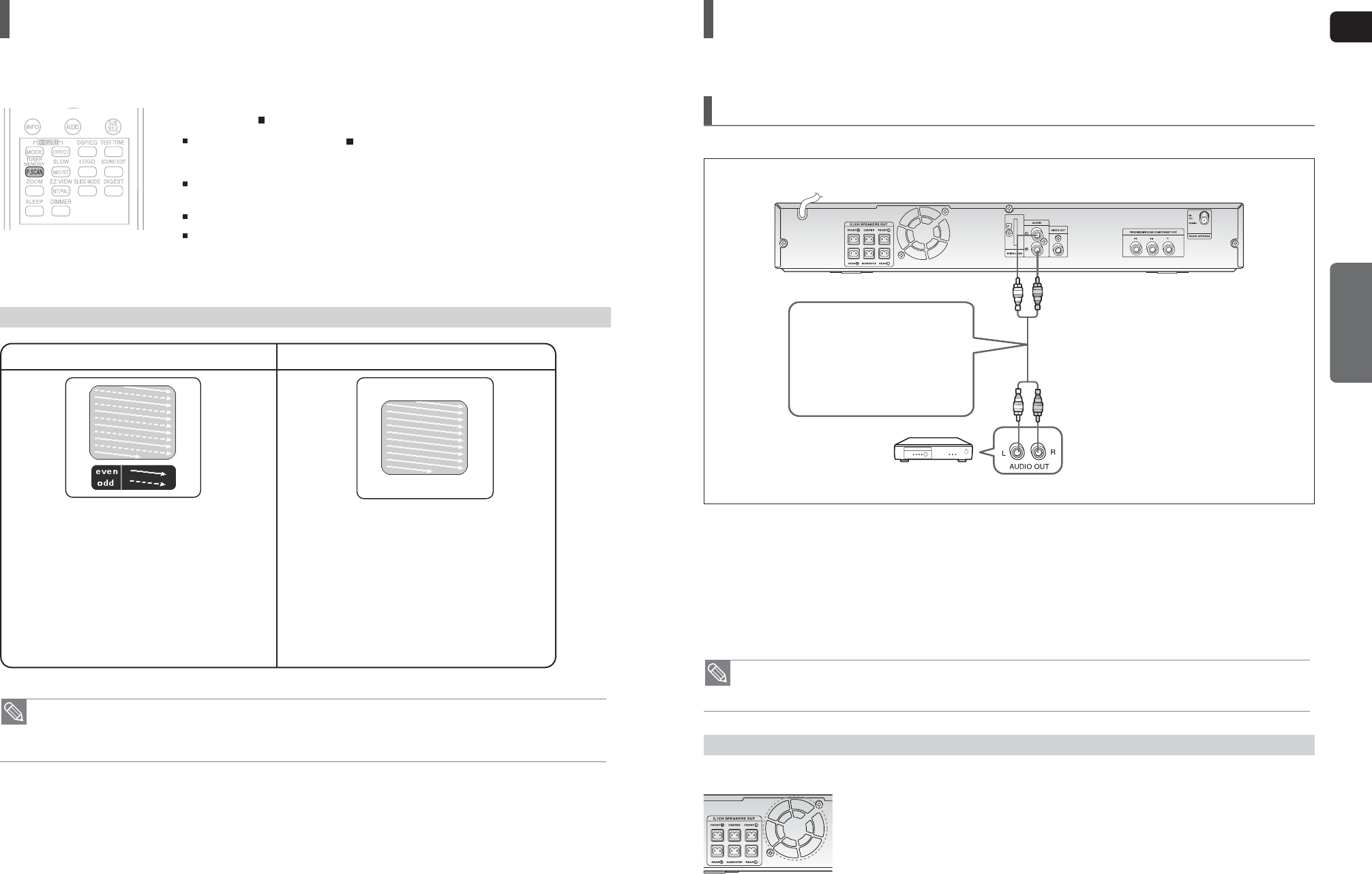
ENG
CONNECTIONS
20 21
• This Progressive function works only on TVs equipped with component video inputs (Y, Pr, Pb) that support
Progressive Video. (It does not work on TVs with conventional component inputs, i.e., non-progressive scan TVs.)
• Depending on the capabilities of your TV, this function may not work.
P.SCAN (Progressive Scan) Function
1 Press STOP
()
button.
If playing a disc, press the STOP ( ) button twice so that “STOP”, appears on the display.
2 Press and hold P.SCAN button on the remote control for over 5 seconds.
Pressing and holding the button for over 5 seconds will select <Progressive Scan> and
<Interlace Scan> alternately.
When you select P.SCAN, "P.SCAN" will appear on the display.
To set P.Scan mode for DivX discs, press the P.SCAN button on the remote control for
more than 5 seconds with no disc in the unit (“'NO DISC" on the display), then load the
DivX disc and play.
Unlike regular Interlace Scan, in which two fields of picture information alternate to create the entire picture (odd scan lines,
then even scan lines), Progressive Scan uses one field of information (all lines displayed in one pass) to create a clear and
detailed picture without visible scan lines.
What is Progressive (or Non-Interlaced) Scanning?
In interlaced-scan video, a frame consists of two interlaced
fields (odd and even), where each field contains every
other horizontal line in the frame.
The odd field of alternating lines is displayed first, and then
the even field is displayed to fill in the alternating gaps left
by the odd field to form a single frame.
One frame, displayed every 1/30th of a second, contains
two interfaced fields, thus a total of 60 fields are displayed
every 1/60th of a second.
The interlaced scanning method is intended for capturing a
still object.
Interlaced Scan (1 FRAME = 2 FIELDS)
The progressive scanning method scans one full frame of
video consecutively down the screen, line by line.
An entire image is drawn at one time, as opposed to the
interlaced scanning process by which a video image is
drawn in a series of passes.
The progressive scanning method is desirable for dealing
with moving objects.
Progressive Scan (FULL FRAME)
Connecting Audio from External Components
Audio Cable
(not supplied)
If the external analog component
has only one Audio Out, connect
either left or right.
Connecting an External Analog Component
Analog signal components such as a VCR.
1 Connect the AUX IN (Audio) on the Home Theater to the Audio Out of the external analog component.
■
Be sure to match connector colors.
2 Press the AUX button on the remote control to select <AUX> input.
■
You can also use the FUNCTION button on the main unit.
The mode switches as follows : DVD/CD ➝ AUX ➝ USB ➝ FM
• You can connect the Video Output jack of your VCR to the TV, and connect the Audio Output jacks of the VCR to
this product.
Please observe the following cautions for your safety.
■
Make sure the unit is well-ventilated. If the unit has poor ventilation, the temperature inside the unit
may rise and may damage it.
■
Do not obstruct the cooling fan or ventilation holes. If the cooling fan or ventilation holes are covered
with a newspaper or cloth, heat may build up inside the unit and fire may result.
The cooling fan supplies cool air to the unit to prevent overheating.
Cooling Fan
X20(1~39P) NOGB 2007.4.12 12:52 PM Page 20


















